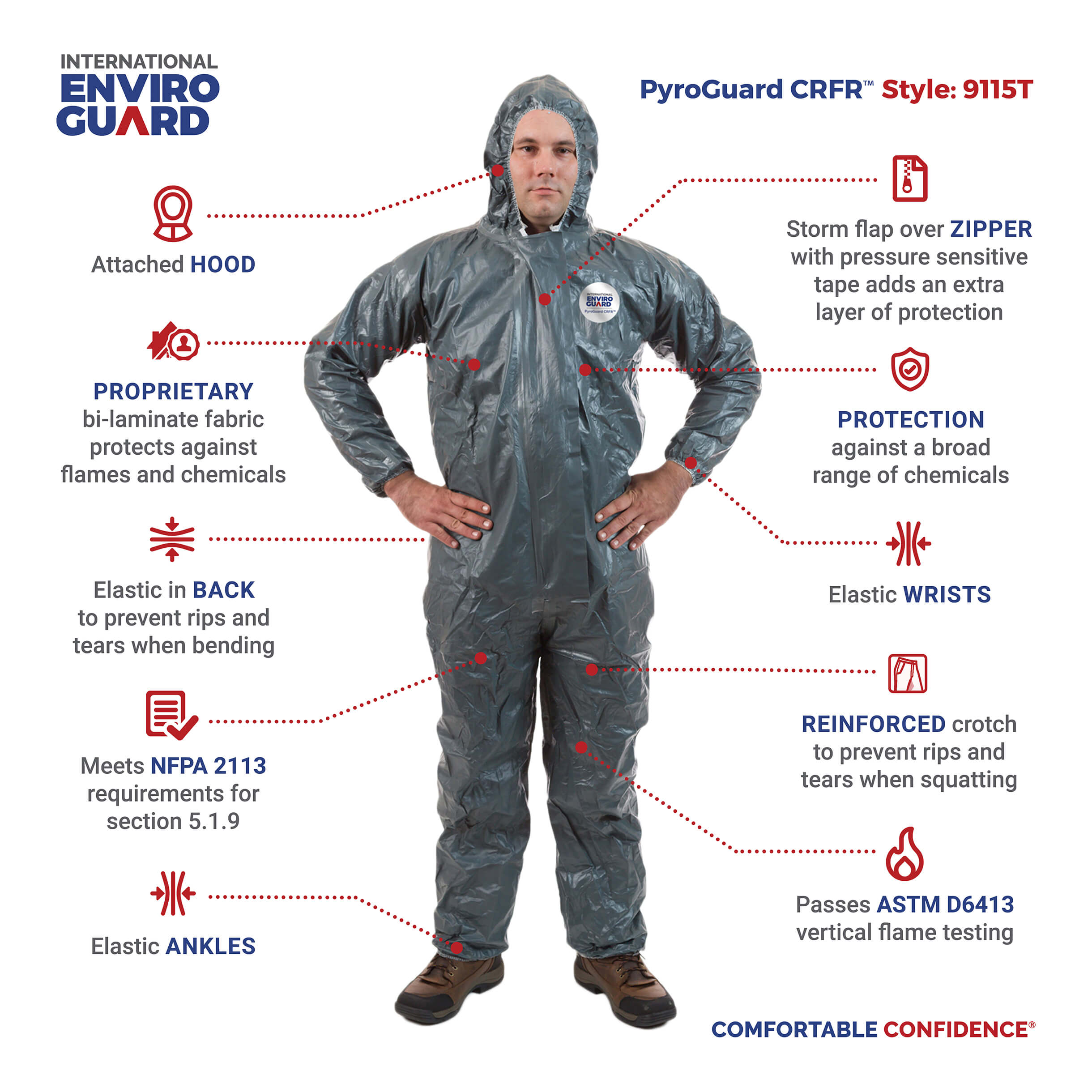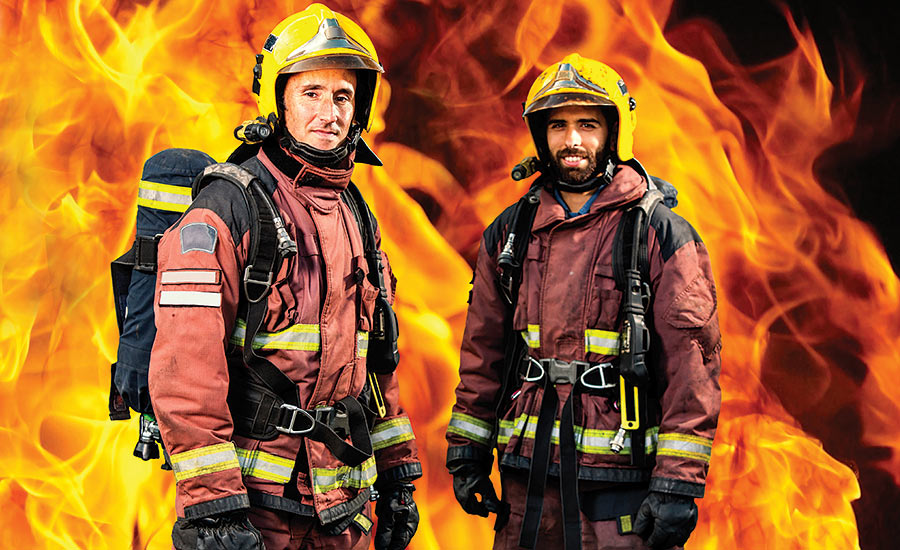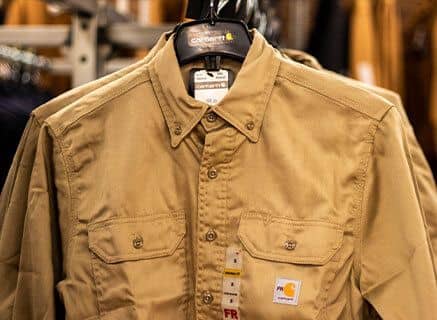Fire-resistant clothes protect individuals from flames and heat. They are crucial for safety in hazardous environments.
Fire-resistant clothing is essential in industries where exposure to flames and high temperatures is common. These garments are designed to resist ignition and self-extinguish when exposed to fire, reducing the risk of burns and injuries. Typically made from materials like Nomex, Kevlar, or treated cotton, fire-resistant clothes provide both protection and comfort.
Workers in sectors such as firefighting, electrical utilities, and oil and gas benefit significantly from wearing these protective outfits. Investing in high-quality fire-resistant clothing ensures safety, compliance with regulations, and peace of mind for both employers and employees. Proper maintenance and regular inspection of these garments are also vital to ensure their effectiveness.
Importance Of Fire Resistant Clothing
Fire resistant clothing is essential for protecting workers in hazardous environments. These garments are designed to protect against flames and thermal exposure. Wearing fire resistant clothes can save lives and prevent severe injuries.
Safety Benefits
Fire resistant clothing offers numerous safety benefits. It helps minimize the risk of burns. The materials used in these clothes resist ignition and self-extinguish when removed from fire. This prevents the fire from spreading.
Let’s look at some key safety features:
- Protection from direct flame and heat exposure.
- Durability and resistance to tears and abrasions.
- Comfort for extended wear in tough conditions.
Industry Applications
Various industries benefit from fire resistant clothing. Below is a table showing different applications:
| Industry | Application |
|---|---|
| Oil and Gas | Protection from explosions and fires. |
| Electrical | Shielding from arc flashes. |
| Manufacturing | Guarding against molten metal splashes. |
| Firefighting | Essential for fighting fires safely. |
Workers in these industries face high fire risks. Fire resistant clothing is crucial for their safety.
Employers must provide suitable fire resistant clothing. This ensures workers are protected from potential hazards.
Fire resistant clothing is a life-saving investment. It ensures workers return home safely every day.
Types Of Fire Resistant Fabrics
Understanding the types of fire resistant fabrics is essential for safety. Fire resistant clothes are made from two main types of fabrics: Inherent Fabrics and Treated Fabrics. Both types offer protection but differ in their properties and uses.
Inherent Fabrics
Inherent fabrics are naturally fire-resistant. They are made from fibers that resist burning without any treatment. Examples include:
- Aramid: Known for strength and heat resistance.
- Modacrylic: A soft, durable, and flame-resistant material.
- Nomex: Often used in firefighter uniforms.
These fabrics do not lose their fire-resistant properties over time. They offer long-lasting protection and comfort.
Treated Fabrics
Treated fabrics are made from regular materials treated with flame retardants. This treatment makes them resistant to fire. Common examples include:
- Cotton treated with FR chemicals: Provides a balance of comfort and safety.
- Rayon with flame retardant treatment: Combines softness and fire resistance.
These fabrics may lose their fire-resistant properties after many washes. It’s important to follow care instructions to maintain their effectiveness.
| Fabric Type | Examples | Properties |
|---|---|---|
| Inherent Fabrics | Aramid, Modacrylic, Nomex | Permanent fire resistance, durable |
| Treated Fabrics | Cotton with FR treatment, Rayon with FR treatment | Temporary fire resistance, needs proper care |
Choosing the right type of fabric depends on the specific needs and conditions. Both inherent and treated fabrics play a vital role in ensuring safety.
Key Features To Look For
Fire resistant clothes are essential for safety in hazardous environments. Knowing the key features to look for helps you choose the best fire-resistant clothing. This section will cover the most important features: Durability and Comfort.
Durability
Durability is crucial for fire-resistant clothing. High-quality materials offer better protection. Look for clothes made from materials like aramid fibers and carbon fibers.
Check the stitching and seams. Double or triple stitching adds strength. Reinforced areas like elbows and knees increase lifespan.
Consider the garment’s ability to withstand multiple washes. Fire-resistant clothes should maintain their properties after washing.
Comfort
Comfort is just as important as durability. Comfortable clothes improve productivity and safety. Choose garments with breathable fabrics.
Look for moisture-wicking properties. These help keep you dry and comfortable. Lightweight materials can also enhance comfort without compromising safety.
Ensure the clothing has a good fit. Adjustable features like cuffs and waistbands can make a difference. A proper fit ensures ease of movement.
| Feature | Details |
|---|---|
| Materials | Aramid fibers, carbon fibers |
| Stitching | Double or triple stitching |
| Reinforced Areas | Elbows, knees |
| Breathability | Breathable fabrics |
| Moisture-wicking | Keeps you dry |
| Fit | Adjustable cuffs, waistbands |
Standards And Certifications
Fire resistant clothes are essential for safety in many industries. They must meet strict standards and certifications. These ensure their effectiveness and reliability. Let’s explore the key standards and certifications.
Nfpa Standards
The National Fire Protection Association (NFPA) sets crucial standards. These standards ensure clothes protect against fire hazards. Key NFPA standards include:
- NFPA 2112: This standard covers flame-resistant garments for industrial personnel.
- NFPA 70E: This standard addresses electrical safety in the workplace.
- NFPA 1971: This standard is for protective clothing for fire fighters.
NFPA standards are widely recognized and trusted. They guarantee high levels of safety and performance.
Iso Certifications
The International Organization for Standardization (ISO) provides global standards. These standards ensure quality and safety in fire-resistant clothes. Important ISO certifications include:
- ISO 11612: This certification covers clothing to protect against heat and flame.
- ISO 14116: This certification deals with limited flame spread materials.
- ISO 13688: This certification specifies general requirements for protective clothing.
ISO certifications are essential for international trade. They ensure products meet global safety standards.
How Fire Resistant Clothing Works
Fire-resistant clothing is essential for many professionals. It protects against burns and injuries. But how does it work? This article explores the science behind it.
Thermal Protection
Fire resistant clothes offer thermal protection. They block heat and prevent burns. The fabric is designed to withstand high temperatures.
- Special fibers absorb heat.
- The fabric doesn’t melt or drip.
- It slows down the heat transfer to the skin.
| Feature | Benefit |
|---|---|
| Heat Absorption | Prevents burns |
| Non-Melting Fabric | Doesn’t stick to skin |
| Slows Heat Transfer | More time to escape |
Self-extinguishing Properties
Another key feature is self-extinguishing properties. Fire resistant clothes are designed to stop burning when the heat source is removed.
- Fabric chars but doesn’t ignite.
- Reduces fire spread.
- Increases safety for the wearer.
This feature protects the wearer and reduces injury risks. Fire resistant clothes are essential in many dangerous jobs. They provide crucial protection and peace of mind.

Credit: int-enviroguard.com
Caring For Fire Resistant Clothes
Fire resistant clothes are essential for safety. Proper care ensures their durability. Follow these guidelines to keep your fire-resistant garments in top condition.
Washing Guidelines
Always check the care label before washing. Use mild detergent only. Avoid fabric softeners. Softening agents can damage protective qualities. Wash clothes separately from regular laundry.
- Wash in warm water, not hot.
- Use gentle wash cycles.
- Rinse thoroughly to remove all detergent.
- Do not bleach or use harsh chemicals.
Drying is equally important. Tumble dry on low heat. High heat can weaken the fabric. Line drying is also a good option.
Storage Tips
Proper storage extends the life of fire-resistant clothes. Store in a cool, dry place. Avoid direct sunlight. UV rays can degrade fabric.
- Keep clothes away from chemicals.
- Use breathable garment bags.
- Ensure clothes are clean before storing.
- Avoid folding; hang if possible.
| Do’s | Don’ts |
|---|---|
| Wash in warm water | Use bleach or harsh chemicals |
| Use mild detergent | Use fabric softeners |
| Tumble dry on low heat | Store in direct sunlight |
| Store in a cool, dry place | Fold for long-term storage |
Following these tips will help maintain the safety and durability of your fire-resistant clothes.
Common Myths Debunked
Fire resistant clothes save lives. But many myths surround them. These misconceptions can lead to poor decisions. Let’s debunk some common myths.
Misconceptions About Safety
Many believe all fire resistant clothes offer the same protection. This is false. Different materials provide different levels of safety.
- Myth: Fire resistant clothes make you fireproof.
- Fact: They resist flames, but do not make you invincible.
People also think fire resistant clothes are uncomfortable. Modern designs use advanced materials. This ensures comfort and safety.
Another myth is that washing reduces fire resistance. Quality fire resistant clothes remain effective even after many washes.
Cost Vs. Value
Some think fire resistant clothes are too expensive. But consider the value they provide. They protect you from serious injuries. This can save on medical costs.
| Cost Factor | Value Provided |
|---|---|
| Initial Purchase | High protection from fire hazards |
| Durability | Long-lasting with proper care |
| Comfort | Modern designs ensure comfort |
Investing in fire resistant clothes is a smart choice. It offers long-term benefits. It ensures safety and peace of mind.
Remember, quality matters. Investing in good fire resistant clothes is a wise decision.

Credit: www.ishn.com
Future Of Fire Resistant Clothing
The future of fire resistant clothing looks promising with technological advancements. Innovations are making clothes safer, more comfortable, and eco-friendly. This blog explores the exciting trends shaping the future.
Innovative Technologies
Technological advancements are revolutionizing fire resistant clothing. Here are some innovations:
- Nanotechnology: Enhances fabric durability and fire resistance.
- Smart Fabrics: Monitor body temperature and environmental conditions.
- Graphene Integration: Provides superior strength and heat resistance.
These innovations ensure better protection and comfort for users.
Sustainable Materials
The future of fire resistant clothing focuses on sustainable materials. Companies are exploring eco-friendly options:
| Material | Benefits |
|---|---|
| Recycled Fibers | Reduces waste and conserves resources. |
| Organic Cotton | Environmentally friendly and biodegradable. |
| Bamboo Fabric | Renewable and has natural fire-resistant properties. |
These materials help reduce environmental impact while ensuring safety.

Credit: www.frdepot.com
Frequently Asked Questions
What Clothing Is Fire-resistant?
Fire-resistant clothing includes materials like Nomex, Kevlar, and wool. These fabrics resist ignition and reduce burn injuries.
What Fabric Is Fire-resistant?
Fabrics like wool, Kevlar, and Nomex are fire-resistant. These materials resist ignition and burn slowly. Cotton treated with fire-retardant chemicals also offers protection.
What Is The Best Clothing To Wear Around A Fire?
Wear natural fibers like cotton or wool around a fire. Avoid synthetic fabrics; they can melt and cause burns. Opt for snug-fitting clothing to reduce fire hazards.
Which Cloth Is Best For Fire?
Wool and treated cotton are best for fire-resistant clothing. They resist ignition and burn slower than synthetic fabrics.
Conclusion
Fire resistant clothes provide essential protection in hazardous environments. They enhance safety and reduce injury risks. Investing in high-quality, durable fire-resistant clothing is crucial. Choose garments that meet safety standards and fit comfortably. Stay safe and secure with the right fire-resistant wear for your needs.
Prioritize safety and stay protected.


